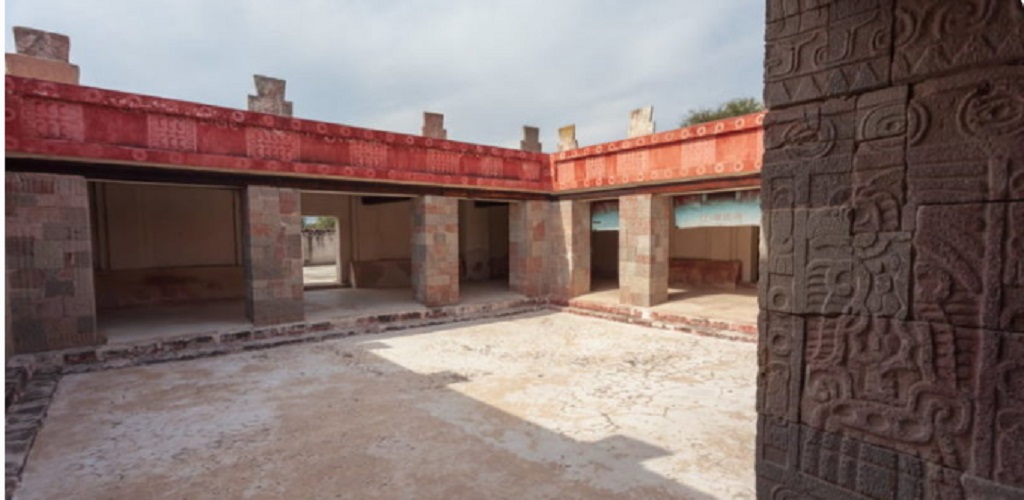What was the Teotihuacan culture?
We explain everything about the Teotihuacan culture. Location, economy, religion and other characteristics. In addition, its main contributions.
-
What was the Teotihuacan culture?
There is talk of Teotihuacan culture or Teotihuacán culture, to refer to the unknown settlers originating in the ancient city of Teotihuacán , one of the largest cities in pre-Hispanic Mesoamerica . This city was founded at some time around 1,000 BC. C.
Little is known about the ethnic character of this pre-Columbian culture, although research points to Totonacs, Nahuas and Otomies. It could even be some cosmopolitan combination of remote Mesoamerican peoples.
Teotihuacan culture is one of the most mysterious of the pre-Columbian American era, whose origins and disappearance are the subject of debate among specialists. It is known of its existence only by the ruins and remains of its city , Teotihuacán, equivalent of ancient and huge imperial Rome.
Its influence can be seen in the clearly Teotihuacan motifs found in the ruins of other ceremonial centers such as Tikal or Chichen Itza. The Teotihuacan city is an important area of archeological monuments today, with a high tourist and anthropological interest, famous for its great pyramids.
It is known that Teotihuacans were an important influence in the development of other Mesoamerican cultures . For example, Teotihuacán was an important pilgrimage center of the Aztec culture , much later, who saw in this already abandoned city a propitious place for religious revelations.
In fact, the name we give it comes from Nahuatl (meaning “City of the Sun”), the language of the Mexica, given that the Teotihuacans were called themselves or their city.
Other cultures:
| Olmec culture | Mayan culture |
| Aztec culture | Greek culture |
-
Geographic location
The city of Teotihuacán is located in the northwest of the valley of Mexico, in the State of Mexico , municipalities of Teotihuacán and San Martín de las Pirámides, about 78 kilometers away from Mexico City, in the Mexican highlands. This area was declared a world heritage site by UNESCO in 1987.
Therefore, Teotihuacan culture must have developed in the geographical surroundings of the city. Its height took place during the Classic Period, between the second and seventh centuries AD. C. , when its decline occurred, as part of the collapse of Mesoamerica in the seventh century AD. C., produced by a combination of political instability and climate change .
-
Characteristics of Teotihuacan culture

Judging by the remains of Teotihuacán, its founders were expert builders with a monumental sense of architecture . Its pyramids of the Sun and the Moon, its temple to Quetzalcoatl and other similar constructions, whose walls painted with allegorical motifs to their religion , their worldview , as well as a fine and beautiful ritual ceramics are famous .
The surroundings of the city served for agricultural development and exploitation of obsidian . Therefore, this city was also an important commercial center of the region.
It is likely that Teotihuacan society was shaped, similar to other Mesoamericans, by priests, warriors, merchants and farmers. It is known that Teotihuacan culture possessed a strong imperial imprint, and conquered other neighboring Mayan cities .
-
Religion and gods of the Teotihuacan culture

The Teotihuacans cultivated a polytheistic and complex religion . It has many points of contact with those of other Mesoamerican cultures, both before and after, surely through dynamics of inheritance and cultural contagion.
The feathered serpent cult, Quetzalcoatl, for example, is frequent in the ruins of other cultures in the region. In Teotihuacán, Quetzalcóatl is revered in an impressive temple , in addition to being present in the form of statuettes and murals.
Other important gods of his pantheon were Tlaloc, god of sowing; Huehuetéotl, god of fire; Tezcatlipoca, god of heaven and earth. They also possessed a set of mythical or sacred animals: the owl, the puma, the eagle and the snake.
It is very likely that their rites involved human sacrifices , a common thing in the region. The sacrifices were carried out by a closed elite of priests or shamans.
-
Most important cities

The great Teotihuacan city and the only one that survives to this day is Teotihuacán . So much so that the city gives its name to culture, despite its name coming from the Aztec language.
The history of this city was an object of interest and curiosity not only for us, but also the Toltecs and Mexicans made its ruins a pilgrimage site . At present, Teotihuacán is, next to Chichén-Itzá, El Tajín and Monte Albán, some of the most important tourist and anthropological places of interest in the region.
Teotihuacán covered, at its peak, an area of about 21 square kilometers. It is estimated that it housed a population of between 100,000 and 200,000 inhabitants.
Its road of the Dead is famous, in north-south axis, crossed at the time by the San Juan River, which was diverted from its channel. Also by the Pyramids of the Sun and the Moon, the temple to the Mythological Animals, the Palace of Quetzalpapálotl, the temple of Quetzalcoatl, or the housing complexes of Yayahuala, Tetitla, Xala and Zacuala.
-
Teotihuacan economy
The Teotihuacan economy, like that of many other Mesoamerican cultures, was based on three axes:
- Agriculture . Corn, beans, peppers and cereals were especially grown, all by irrigation techniques and arranged on terraces.
- Trade . It was facilitated by the enormous dimensions of the city and its important influence in the region.
- Wars . It is known about the epic deeds of the Teotihuacan conquest of the Mayan cities of Tikal, Copan and Quiriguá, during the heyday of Teotihuacán between the second and fourth centuries.
-
Contributions of the Teotihuacan culture

Although much is unknown about the original inhabitants of Teotihuacán, its imprint was felt in the region . His legacy remains until today, mostly in the ruins of what was his great metropolis.
Part of his mythological stories is preserved . Many of his beliefs are shared totally or partially with other Mesoamerican cultures , in a cultural melting pot of utmost historical importance.
It also endures its ceramics and masonry , its impressive vision of architecture and engineering, or the colorful ceremonial masks with which they undertook their rites.





